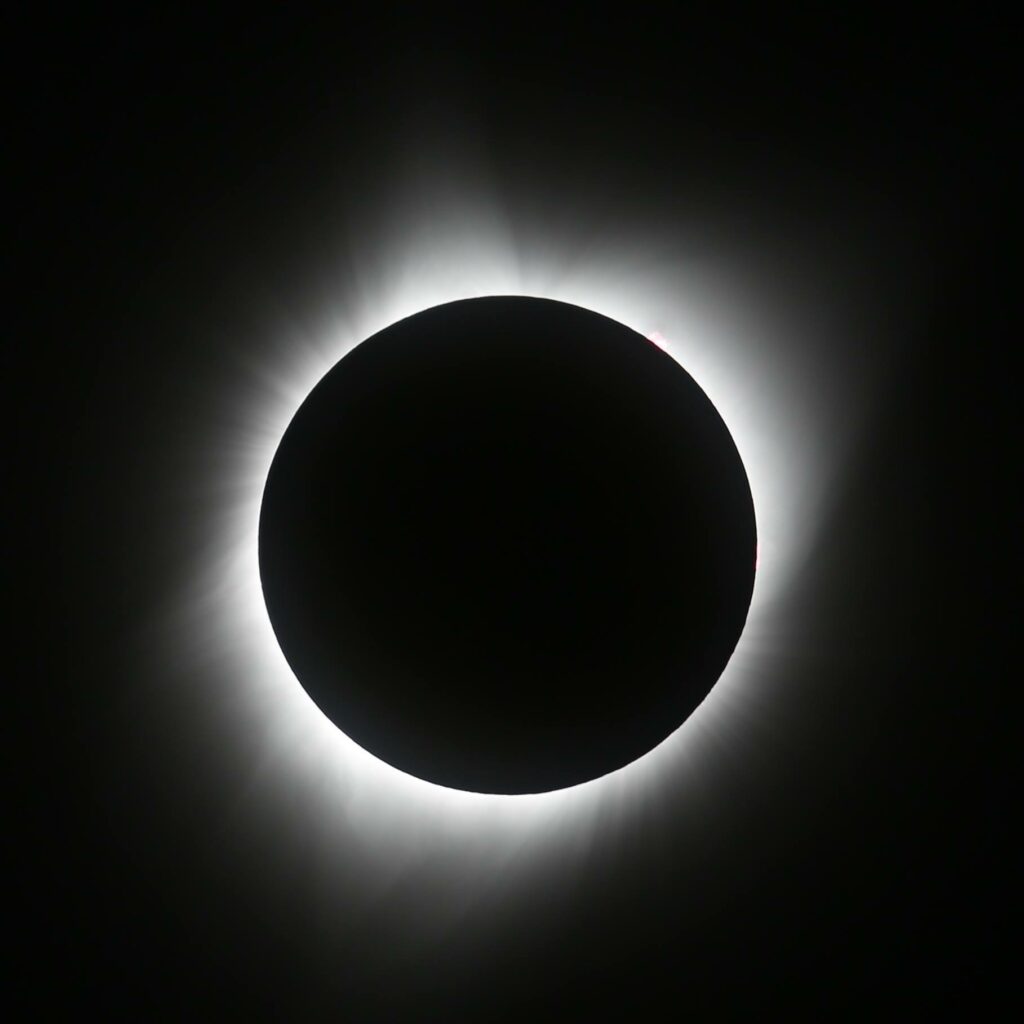
Can’t chase the solar eclipse to Mazatlán or Montreal this year? (Yes, it’s a thing.) Yeah, we can’t either. Luckily, Matadors can still get a taste of the eclipse experience, thanks to the Department of Physics and Astronomy. Astronomy professors and Society of Physics student members will have a solar telescope and eclipse glasses at the Bianchi Planetarium on Monday, April 8, from around 10 a.m. to 12 p.m. to help people safely experience the solar eclipse in Los Angeles. (Reminder: safe viewing means do NOT look directly at the sun with the naked eye during the eclipse. Sunglasses don’t help.)
The last total solar eclipse that was visible in the United States was in 2017— according to NASA, it was the first total solar eclipse visible in the U.S. in 38 years. Those in the “path of totality” will experience darkness, much like the sky at dusk. Physics Department Instructional Support Technician Tanner Rosenberg notes that in Northridge, we won’t see the entire coverage of the moon over the sun, but viewing it properly is still a worthwhile experience.
“We’re going to get about 48% coverage, so it will still look cool,” Rosenberg said. “You’ll be able to see the little moon shape carved out of the sun, but it’s not going to go totally dark for us.”
Society of Physics students will also demonstrate a pinhole camera, which is a way to indirectly view the eclipse, by creating a projection of the sun on a nearby surface.
If you want to get a view of what’s happening in the path of the eclipse, there will be a live stream set up inside the Bianchi Planetarium from a location that is experiencing total coverage.
For Department Chair Debi Prasad Choudhary and Damian Christian, a professor of physics and astronomy, the eclipse is an opportunity for research. The two are traveling to Texas to compare images that they took from the 2017 eclipse to this year’s event, specifically studying the solar activity and the solar spectra and the differences between them.



